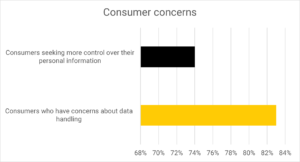First-party data is rapidly emerging as the foundation of modern digital advertising, especially as the industry questions the future of third-party cookies. Google’s initial announcement to eliminate third-party cookies from Chrome triggered widespread concern among advertisers who relied on them for cross-site tracking and personalization. But with Google reversing that decision—at least for now—the advertising world remains in flux.
The ongoing reliance on third-party cookies is now being reconsidered, as privacy regulations tighten and consumer trust becomes harder to earn. This shift highlights the growing importance of first-party data in building sustainable, privacy-respecting advertising strategies.
The Shifting Role of Third-Party Cookies
For years, third-party cookies have been the backbone of digital advertising, allowing companies to track users across various websites, segment audiences, and deliver highly targeted campaigns. But their effectiveness is under scrutiny due to increasing privacy concerns and calls for stricter data security regulations.
In response to these shifts, Google’s VP of Privacy Sandbox, Anthony Chavez, announced a plan to introduce new tools that empower users to make informed choices about their web browsing preferences. This marks a significant shift from relying on intrusive tracking methods to prioritizing user consent and transparency.
The Move Toward First-Party Data
A staggering 83% of consumers have serious concerns about how companies handle their data, and 74% want more control over their personal information (source: McKinsey & Company). Advertisers can no longer afford to ignore these concerns.

Successful companies are increasingly turning to first-party data as a safer and more reliable alternative. First-party data is collected directly from users and offers deeper insights into behavioral patterns and purchase histories without relying on third-party tracking. This approach enables advertisers to create personalized experiences while ensuring compliance with stringent privacy regulations like GDPR.
The Challenges with Third-Party Cookies
The use of third-party cookies is becoming more problematic and less effective as new privacy regulations come into play. Additionally, browsers like Safari and Firefox have already implemented strict privacy rules that limit cookie tracking. Moreover, the rise of ad-blocking tools has made it even harder for advertisers to reach their audiences effectively.
Beyond technical hurdles, third-party cookies present significant risks, including click fraud and data inaccuracies, which can inflate advertising costs and skew performance metrics. Transparency and brand safety are also major concerns, making third-party data a less reliable option for building trust with consumers.
Addressable TV: A Strong Alternative
As advertisers look for new ways to reach audiences without relying on third-party cookies, Addressable TV is emerging as a powerful solution. Addressable TV uses data from smart TVs and connected devices to target specific households, enabling advertisers to deliver relevant ads even within the same content broadcast.
Unlike traditional TV ads, Addressable TV allows for precision targeting using 1st party data rather than third-party cookies. This approach respects user privacy while ensuring that the right message reaches the right audience.
Why Addressable TV Works:
- Better Relevance: Household tailored ad preferences, resulting in higher engagement.
- Improved ROI: Targeted ads reduce wasted spend and increase return on investment.
- Privacy-First Targeting: Addressable TV uses non-intrusive data, respecting user consent.
Contextual Advertising: Relevance without Cookies
Another effective alternative is contextual advertising. This method aligns ads with the content being viewed, ensuring greater relevance and engagement. For example, during a cooking show, an ad for kitchen appliances would feel natural and resonate better with viewers.
A study by GumGum and SPARK Neuro found that contextual ads:
– increased user engagement by 43%
– improved brand recognition by 2.2 times compared to non-contextual ads.
These results show that ads placed in the right context are more memorable and emotionally effective, contributing to greater advertising success.

Conclusion: The Future of Advertising Without Cookies
Although Google has delayed the elimination of third-party cookies, the shift away from them is inevitable. Forward-thinking advertisers are already embracing first-party data, advanced ad tech solutions, and addressable TV to create relevant, privacy-compliant advertising experiences.
By adopting these strategies, brands can maintain a competitive edge, deliver more personalized campaigns, and build consumer trust in an increasingly privacy-conscious world.
Ready to future-proof your ad strategy? Explore how first-party data and addressable TV can transform your campaigns today.








